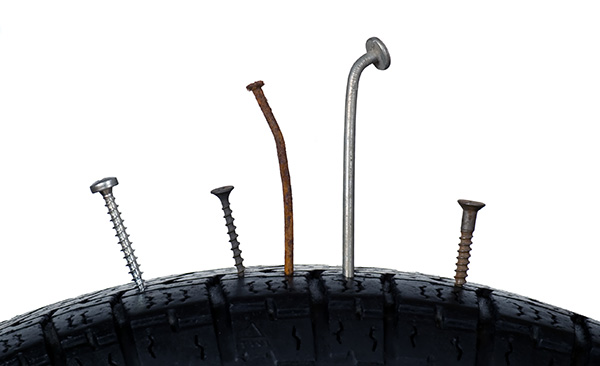
Did you just hear that unmistakable flapping sound—a flat tire? It's a scenario that every driver dreads, but it happens more often than we'd like. When facing a punctured tire, the big question is whether to repair or replace it altogether. This decision can impact your safety, wallet, and peace of mind. Let's explore the factors that should guide your choice between repairing and replacing a punctured tire.
Assessing the Damage
When it comes to dealing with a punctured tire, the first step is to assess the extent of the damage.
Location of the Puncture
Where the puncture occurs plays a critical role in determining whether the tire can be repaired. Punctures in the tread area, away from the sidewall, are generally repairable. This is because the tread is thick enough to accommodate a plug or patch without compromising the tire's structural integrity.
Size of the Puncture
The size of the puncture is another crucial factor. Small punctures, typically less than a quarter-inch in diameter, are usually repairable. Larger punctures, especially those that exceed a quarter-inch or are irregular in shape, may require tire replacement.
Tire Repair Process
Understanding how a tire is repaired can shed light on the decision-making process.
Professional Inspection
A qualified technician will inspect the tire to determine if a repair is feasible. They will assess the size, location, and type of puncture, as well as the overall condition of the tire.
Repair Methods
There are two primary methods for repairing tires: plugs and patches. Plugs are used for smaller punctures and are inserted into the tire from the outside. Patches, on the other hand, are applied to the inside of the tire and provide a more permanent seal.
When to Repair a Tire
Not every punctured tire can or should be repaired. Knowing when a repair is appropriate is essential.
Criteria for Repair
- The puncture is within the tread area and not near the sidewall.
- The puncture is small, typically less than a quarter-inch in diameter.
- The tire has not been previously repaired multiple times.
When to Replace a Tire
In some cases, replacing the tire is the safest and most practical option.
Irreparable Damage
If the puncture is in the sidewall, it cannot be safely repaired. Sidewall damage compromises the tire's structural integrity and increases the risk of a blowout.
Excessive Wear or Age
If the tire is worn out or nearing the end of its lifespan, replacing it might be more cost-effective in the long run. Tires with insufficient tread depth pose safety risks, even if they can be repaired.
5. Factors Influencing Your Decision
Several factors should influence whether you choose to repair or replace a punctured tire.
Safety Considerations
Your safety and the safety of your passengers should always come first. A compromised tire can affect your vehicle's handling and stability, especially at higher speeds.
Cost Effectiveness
Repairing a tire is generally less expensive than replacing it. However, if the tire is nearing the end of its life or if the damage is extensive, replacement might be a more economical choice in the long term.
Ensure your safety and peace of mind with professional tire services at Morrison Tire. Visit us for a comprehensive inspection and timely repairs.